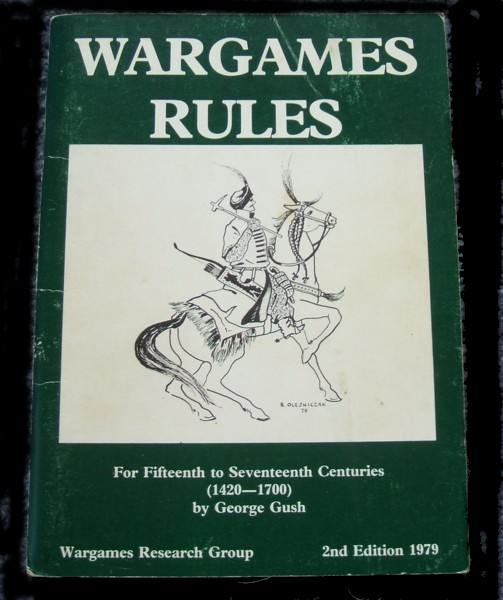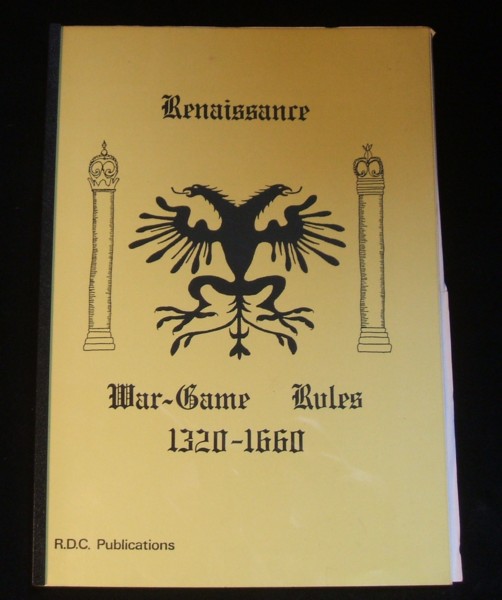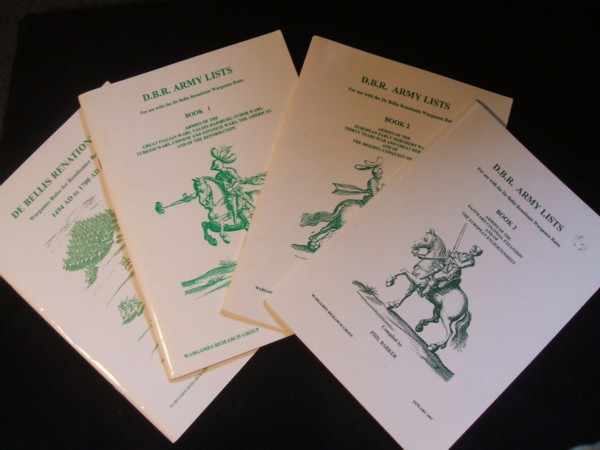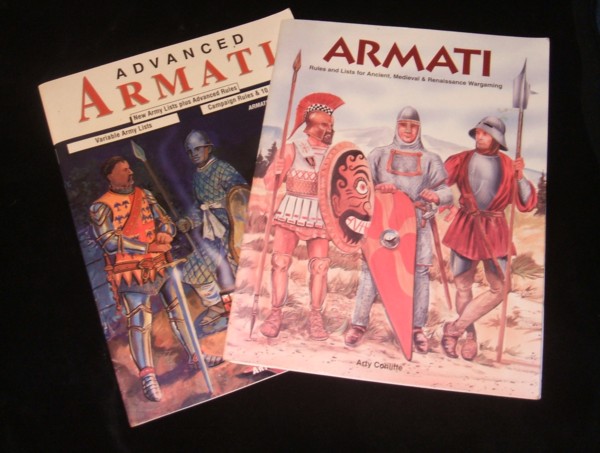Some Renaissance Wargames Rules


|

|


Renaissance Wargaming
Rediscover your way back to my Periods of Interest
I've always found the Renaissance a fascinating period. In amongst all that painting and sculpting and rediscovering of ancient knowledge, Europe was in political, religious and military ferment.
While Galileo was discovering the moons of Jupiter, and Leonardo da Vinci was sketching ideas for tanks and flying machines, ancient and accepted ways of waging war were being overthrown by men courageous enough to try new technologies such as firearms, or to reinterpret ancient weapon systems (such as the pike) in new ways (the tercio or the Swiss Keil).
I first became interested in Renaissance Wargaming in the early '80's. The rules then in use were Wargames Rules for Fifteenth to Seventeenth Centuries by George Gush and published by the Wargames Research Group (or WRG). The second edition of these rules had been published in 1979. There were quite a few 25mm armies around in New Zealand at that time and I remember being enchanted by some Polish Winged Hussars I saw at a convention in Hamilton.
In the mid to late 1980's Michael Anastasiadis and Richard Mason, through R.D.C. Publications, brought out a set of rules called Renaissance War-Game Rules 1330-1660 which seemed to be a 'cleaned-up' version of Gush. I think I only ever had one game of Gush's rules (which drew heavily on WRG's 6th Edition Ancient rules) and have never played R.D.C.'s rules.
In the mid-'90's WRG revisited Renaissance with the release of De Bellis Renationis, morphing the popular DBA mechanics into the Renaissance. Version 1.1 came out in 1997 and Version 2 was released in 2004, after an interactive test via the Internet.
Advanced Armati (AA) included rules for the Renaissance period. These worked very well for the early Renaissance but the divisional structure that forms the core of Armati became a bit restrictive for the English Civil War/Thirty Years War period. Having said that, I very much enjoyed moving 'units' (battalions/regiments) as opposed to mucking around with elements.
I have only ever played a couple of games of Principles of War: Renaissance and now can no longer remember whether we had access to a proper set of the rules, or whether they were modified from another period. I liked the variable unit strengths but found that the combats became grinding matches until one or the other side was able to swing in enough of an advantage to tip the factors in their favour.
My preferred scale is 15mm and my first, and main, Renaissance army is Russian Traditional - the figures were bought back in the early-mid '80's when Richard Mason and Brent Senior-Partridge had the local licence for Mike's Models. As the figure types and ratios were bought with Gush's Rules in mind, I had sufficient figures to finally do a DBR army.
I have tried most mid to late period combinations with this army from cavalry heavy to infantry heavy. It is a pretty brittle army, especially against Western style Shot/Pistol forces, though I have had some success with it.
For Armati I painted up an English Civil War Royalist army and have been 2/3s of the way through a Scots Covenanter for the last several years. Figures are Essex.
Also from Essex, and still to be painted, are a Burgundian Army of the Later Hundred Years War period (figures were bought with Advanced Armati in mind) and a Polish Army. With the Poles, I have sufficient figures to make both the Middle and Later Period armies for DBR.
The Italian Condotta Army I put together for WRG 7th Edition Ancients/DBM has served as the basis for a number of early Renaissance armies - Italian Condotta, Italian Wars French, Venetian - to mixed results (which usually depends upon where I am in my cycle of playing DBR).
I also have various generic Western European troops, again from Essex, awaiting painting, plus figures to make up a Portuguese Colonial force with Indian allies.